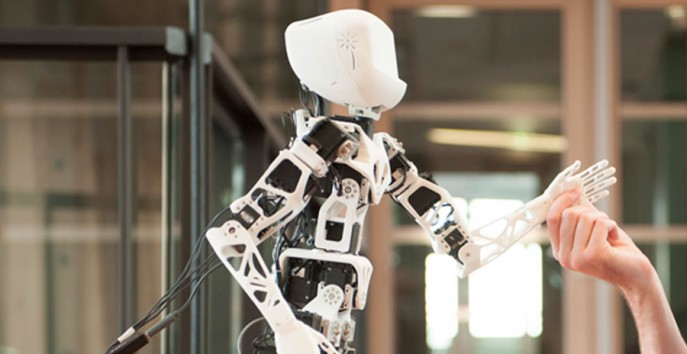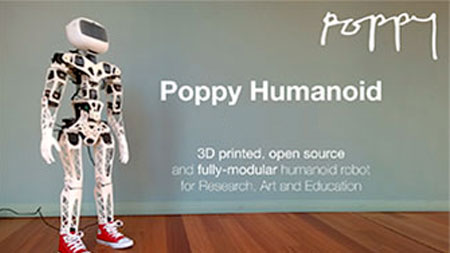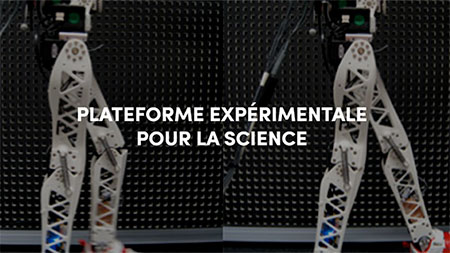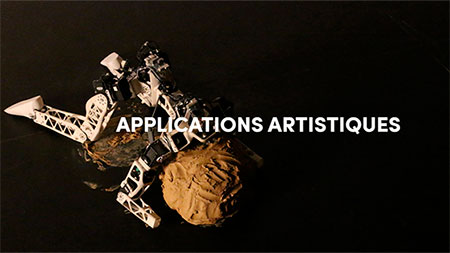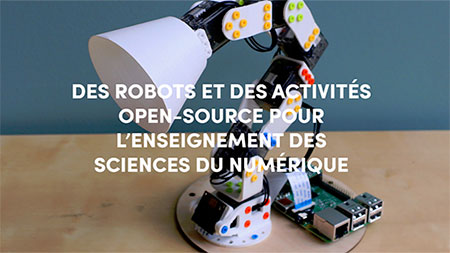A new future for Poppy
Until now, the Poppy Humanoid robot , a 3D-printed technology platform , has been used mainly in education and research. Some owners of these robots use them in other areas, for example the art world, but such use is still quite rare.
Poppy is now diversifying into the hospital sector. In fact, in a few years’ time there’s a strong possibility that you’ll find it alongside physiotherapists in hospitals serving the role of assistant and coach, in particular for back rehabilitation .
The situation in hospitals today
Hospitals today manage a large number of physiotherapy patients, and a great majority of these patients are people suffering from back pain. Yet hospitals still lack physiotherapists, meaning they sometimes have to manage several patients simultaneously. Worse still, some patients are even left to their own devices when it comes to doing rehabilitation exercises .
The new Poppy assistant , expected to arrive in a few years’ time, will address this problem. In fact, sessions can be less effective when patients have no feedback on their movements, because they don’t know if they’re doing them correctly. The Poppy robot will overcome this by playing the role of physiotherapy assistant, and even coach, during exercise sessions.
This won’t be the first time robotics technologies are used to improve healthcare. Many are already in place in the medical field, including remotely operated robots in surgery (for example the Da Vinci robot). In terms of rehabilitation, the technologies currently being proposed are aimed at helping patients do virtual exercises.
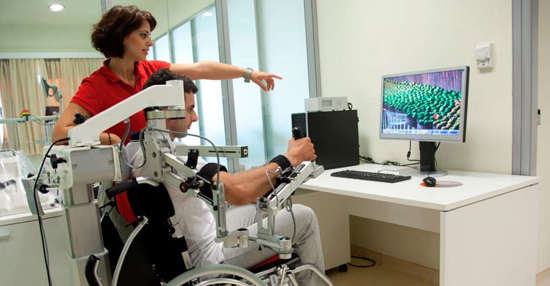
But these robots are generally very expensive, and most physiotherapists don’t use them. One thing’s for sure, there are not currently any humanoid robots assisting physiotherapists, so using Poppy in this way would mark a great breakthrough in rehabilitation .
KERAAL
This project has received funding from the European Union’s Seventh Framework Programme for research, technological development and demonstration under grant agreement no 601116 as part of the ECHORD++ (The European Coordination Hub for Open Robotics Development) project.

The project under which these robots are being developed to meet the rehabilitation needs of patients suffering from back pain is a European project called KERAAL . It consists in creating an assistant, from the Poppy Humanoid robot, so that all patients can be monitored.
Poppy will demonstrate the movements that need to be carried out for each exercise, observe patients and tell them if they’ve performed the movement correctly or not.
Patients will therefore benefit during their sessions from the guidance of a friendly and encouraging robot. In short, a real coach!
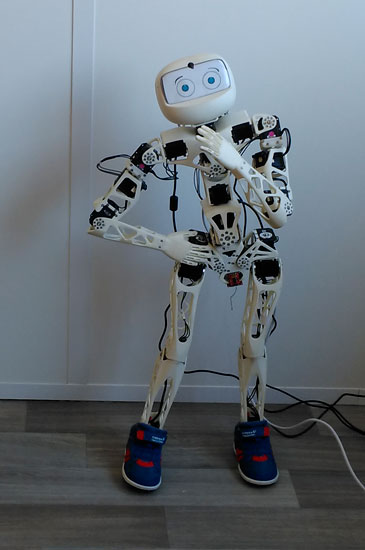
The project is headed by a multidisciplinary team composed of engineers from the Génération Robots robotics engineering department, research fellows from Télécom Bretagne and health professionals (Brest Hospital) .
The team boasts all the skills required to meet KERAAL’s specific needs.
#1 Demonstrating movements
The Poppy robot will carry out a series of pre-recorded movements in front of patients so that they can reproduce them, like a sports coach or a true physiotherapist. It will involve more than simply a visual demonstration, as the Poppy robot will focus on the most important aspects of each movement .
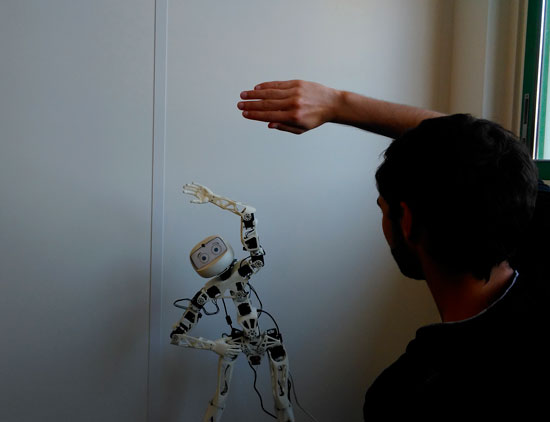
#2 Observing patients
Like a physiotherapist, Poppy will watch the patients as they perform their exercises, not only through its camera but also using Kinect cameras capable of analysing the movements in detail . Poppy will do more than merely demonstrate!
#3 Providing feedback
Having analysed their movements, the robot will then tell patients what it thinks. It will for example tell them whether they are performing the movements correctly or not , and can therefore correct them . Which is what makes all the difference between simply a video showing a series of exercises and a coach robot!
#4 Communication and encouragement
Finally, Poppy will be programmed to be both friendly and encouraging . It’s always better working with a smiling coach than just a dull robot. Interaction between Poppy and the physiotherapists or patients is designed to be simple, enjoyable and efficient, while establishing a relationship of trust between the user and the robot.
Conclusion
Poppy will be capable of interacting with patients, and of successfully carrying out a rehabilitation session. But above all it will be able to observe and tell patients if they’re doing their movements correctly, which is quite something.
Ultimately, this new technology will be a source of substantial added value for the hospital , as it will avoid them having to leave patients to their own devices. The KERAAL project is not intended to replace physiotherapists or caregivers. The robot will remain a medical assistant, and may even create new jobs.
And it won’t stop there!
This new use of Poppy will meet a current need in the medical field. And following on from this it’s easy to imagine the Poppy robot being used in lots of additional areas, including in sport or for artistic purposes. Generally speaking, this new application will make it easier to create movements and choreographies for the robot, while improving its interaction with humans.

